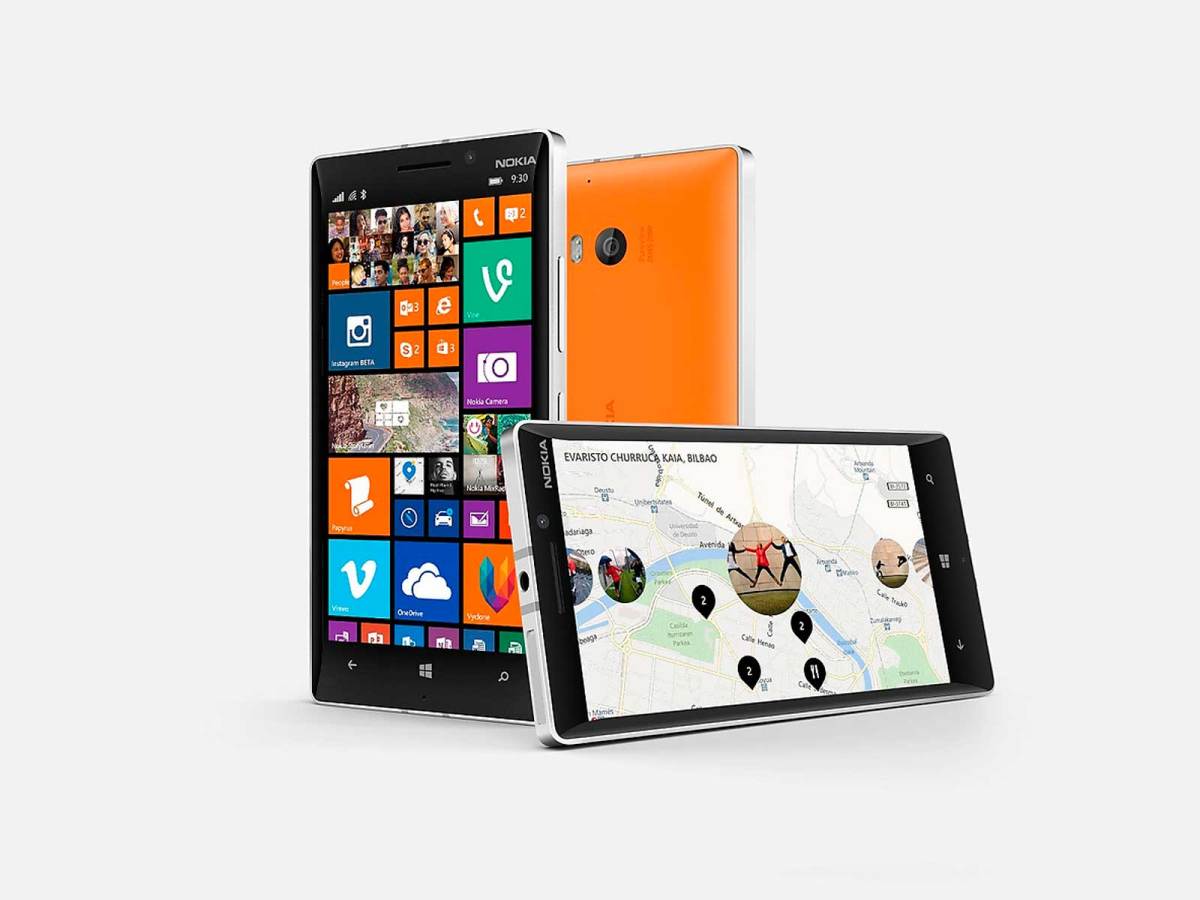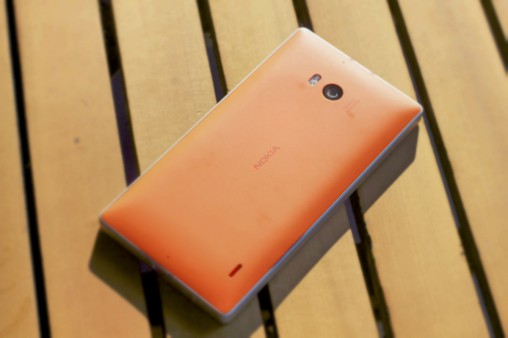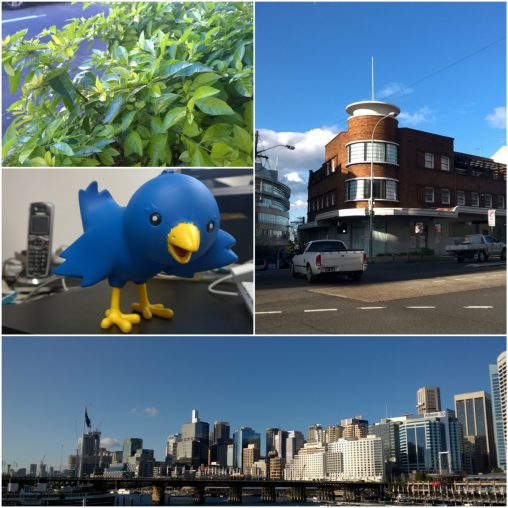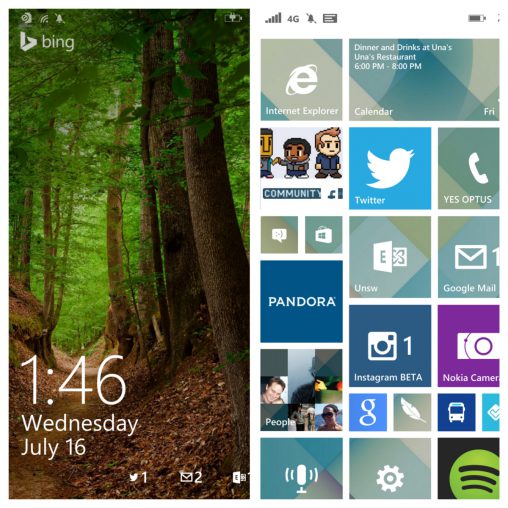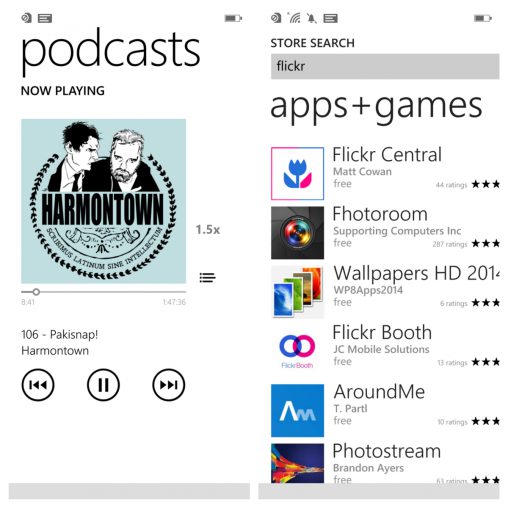Review by Peter Wells

Nokia’s latest flagship phone, the 4G Lumia 930, was launched last week to the Australian tech press. Early reviews have been glowing, calling it the best Windows Phone to date. The questions is, does the best Windows phone to date stand a chance against Android and iOS?
Hardware
The Lumia 930 is a stunning looking phone. At least, I thought it was stunning, my wife thought it was hideous, such is the danger of building a phone this unique. I’ll leave it up to you to decide.
The curved glass front, while beautiful, makes me a little nervous: I can’t help but think it’ll be a scratch magnet. Nokia assures me that the glass is tough enough for general use.
Like the iPhone 5 and HTC One (M8), the phone is built around a solid aluminium core, making it feel as well made as those devices. Unlike Apple and HTC’s flagships, the back is coated in a colourful rubbery shell, making it more comfortable to hold and far less slippery. This combination makes a handset that feels as good as it looks, a rare feat. Still, as HTC knows, having the best looking phone on the market is not always enough.
Other reviewers have complained the rubbery back picks up scuffs and marks. I’ve not noticed this on my device — and I’ve not been precious with it — but I do wonder how long until that bright orange back begins to look naff. One of the bonuses of a sleek aluminium iPhone or HTC One is you can dress it up in cases to match your mood. Here, you’re stuck with neon orange or green for the term of your phone contract.
Back to that screen. It’s absolutely gorgeous, the kind of screen Steve Jobs would call ‘lickable’. At 5 inches, it’s a little too large for my tastes, but I’ve given up fighting that battle. It’s a Full HD 1080P OLED display, as good as anything that Samsung, king of phone screens, has shipped. It’s remarkably bright and readable in even the brightest outdoor environments.
As with all giant smartphones I’ve played with this year, the battery lasts a full day off the charger. Microsoft includes a few battery saving features within the settings menu, limiting location and background refresh, but there are so few apps that take advantage of these features, I’m not sure the settings are worthwhile.
Camera
Nokia has been known for their amazing cameras in the past and the Lumia 930 lives up to this proud tradition. Without any effort, you can take gorgeous pics in most conditions. The 930 took beautiful portrait shots with a pleasing bokeh. Landscapes shots were just as good, with fine detail, contrast and colour. Low light was a tad hit and miss for me, but respected rival hack Luke Hopewell at Gizmodo Australia notes that good low light images are possible in manual mode. Fair enough, but I’m used to phone cameras that are point and shoot, always on auto.
Software
Here’s where I’ll make a few enemies.
Windows 8.1 is a solid update to Microsoft’s stab at a smartphone operating system. The update brings WP8 up to iOS 4 and Android 3.2, bringing notification bar to the OS, and most importantly for me, a rotation lock.
The best feature of 8.1 is Cortana, a personal assistant that apparently borrows some anthropomorphic characteristics of Siri, with a bit of good ol’ fashioned Google Now creepiness, to predict what you might want before you even knew you wanted it. I say apparently, because Cortana is not available in Australia. Worse still, there is no firm date from Microsoft or Nokia on when we might see Cortana.
As I’ve said in previous reviews of Windows Phones, Metro is like an inverse picture of Dorian Gray: it has a fading beauty. Once you’re passed the novelty of the clean lines and text heavy minimalism, you begin to miss the simple ways to navigate, like buttons and obvious sidebar menus. It’s the difference between being able to glance at your screen and know what to tap, and having to stop for a second to figure out which text is the text you want.
Despite the sexiness, I can’t help but feel Microsoft is due for a visual refresh for Metro. Android introduced a minimal look with Holo, but it was never as close to minimal as WP8. Even so, they’ve added texture back to the UI with their upcoming L release. Apple’s minimal overhaul was even more dramatic. iOS swung from a Forstall-led felt and leather look to a minimal, colourful look with iOS 7, but they’re adding back buttons and a hint of 3D with iOS 8, which is currently in beta and will be released in the southern spring. Meanwhile, Metro is as minimalist as it was in 2010.
Still, there is much here to love. I love the look of the calendar and mail app. The home screen is more than usable now, thanks to variable tile size, and there is something to be said for the overall simplicity of the design. I would love iOS and Android to steal the simple lock-screen-with-Bing-images idea.
The Marketplace
Microsoft has made a lot of noise about getting some big name apps into its store. Yes, Instagram is finally here, and it is even prettier than its Android and iOS brethren. Spotify has arrived as well, but for every major new get, there’s a hundred apps missing.
Setting aside the big names, the Marketplace experience can be divided into the missing, the neglected, and the dodgy.
The missing apps are those that just don’t exist on Windows Phone 8. A quick list of apps I rely on that aren’t available on Windows Phone include Dropbox, Hangouts, Google Music, Google Now, Google Drive, Google Chrome (Google and Microsoft don’t like each other much) YouTube, Footy Live, Feedly, Simplenote, Next There, Pocketcasts (or any decent podcast app). Tinder and Snapchat are also missing, for those into that sort of thing.
Yes, you can swap Dropbox for Onedrive, Simplenote for OneNote, but that’s a big ask for most.
Also missing are all the amazing little game that all your friends will want you to play for a few weeks before moving on. Here’s where a narrowly stocked Marketplace hurts Microsoft the most. It doesn’t matter if your platform gets Angry Birds if the rest of the world has moved on to Draw Something, Threes, Monument Valley, Dots or Blek. Users don’t like to miss out when the rest of the world is going nuts for five minutes about Flappy Bird.
In the neglected pile, we have mainstream apps like Twitter and Foursquare, which look like they haven’t been updated in a year. Meanwhile, smaller apps I used to love have disappeared, such as the excellent Rowi.
Then there’s the weird section of the Microsoft store full of ripoff apps. Apps that outright steal the icon and name of a successful iOS or Android app, like Safari, or wrap a website into an app, like Flickr Central. I’m not entirely comfortable trusting either.
Conclusion
The Nokia Lumia 930 is indeed the best Windows Phone I’ve ever used, but it’s still a Windows Phone. Windows Phone is bold and beautiful to it’s fans, and I suspect I’ll hear from a few of them, but for me, it is still too frustratingly basic on the OS level.
Beyond the OS, it’s a third party app wasteland. I just can’t recommend Windows Phone. Even using it with my secondary work SIM was a pain, as none of the software that keeps Android and iOS in sync was available. Windows Phone remains in its own little world, a pleasant place to visit, but you wouldn’t want to live there.
Nokia Lumia 930 is available on a range of plans from the three major carriers and outright from retailers for RRP $729. For more on this release, read Personalisable! Welcome to Windows Phone 8.1 on the Nokia (definitely Nokia) Lumia 930 and 635.
Peter Wells is the co-founder of the award-winning technology website Reckoner.com.au and a regular AR contributor.

